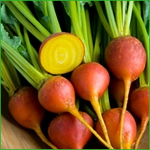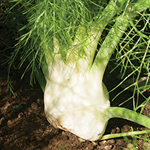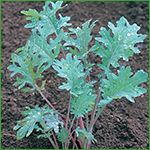- Artichokes
- Asparagus
- Baby Leaf
- Beans
- Beets
- Broccoli
- Brussels Sprouts
- Burdock
- Cabbage
- Carrots
- Cauliflower
- Celery & Celeriac
- Chicory
- Chinese Cabbage
- Collards
- Corn
- Cucumbers
- Eggplant
- Fennel
- Garlic
- Gourds
- Greens
- Horseradish
- Husk Cherry
- Kale
- Kalettes
- Kohlrabi
- Leeks
- Lettuce
- Melons
- Microgreens
- Mushrooms
- Okra
- Onions
- Parsnips
- Peas
- Peppers
- Potatoes
- Pumpkins
- Radishes
- Rutabagas
- Scorzonera & Salsify
- Shallots
- Shoots
- Spinach
- Sprouts
- Summer Squash
- Sweet Potatoes
- Swiss Chard
- Tomatillos
- Tomatoes
- Turnips
- Watermelons
- Winter Squash
What to Plant Now — Beets, Fennel & Kale
Across much of the United States and Canada, July into early August is the time to plan, and in some cases even to plant, your fall crops. By choosing the best varieties for fall, scheduling the plantings, and growing sufficient quantities, you can extend your marketing season well beyond your frost date.
In this article we highlight three crops — beets, fennel, and kale — that are not simply great choices for autumn markets, but also continue as leading trends in vegetable crops. An abundant display of these popular vegetables is sure to attract customers to your stand.
Beets
It is easy to understand why beets are increasingly popular — the bottom half of this "two for one" crop offers great colors and shapes, sweet flavor, and high nutritional value. As the weather cools off in fall, beets get sweeter and their colors intensify.
The top half of the two-for-one value is the leaves. Beet "greens" can be red or green or both, and sold separately as beet-green bunches or with the tender young beet roots still attached. They are nutrient-packed, hugely popular, and hard-as-the-dickens for customers to find in many regions right now.
We recommend direct-seeding beets 8 weeks before heavy frost and freezes. They can tolerate light frost, and row cover can help extend the season for the beet tops even longer.
Johnny's also carries pelleted beet seeds, which make planting with a precision seeder much easier.
At market, display beets with the colorful roots facing the customer. Cut a few in half to show the tender inner flesh, and mist the beets frequently to keep them shiny and colorful.
Fennel
Fennel has enjoyed a rich history, and was revered by the ancient Greeks and Romans for its medicinal and culinary properties.
Increased exposure on cooking channels and food blogs has brought bulb fennel back into the spotlight. Its mild anise flavor and crispy, celery-like texture make it a good choice for fresh eating in salads or with dips. It can also be baked, roasted, and sautéed.
Fennel can be grown in spring or fall, but is best in fall because it is less likely to bolt as the weather gets cool. Plant it earlier than beets or kale because it takes longer to mature. It is also less tolerant of frost than many other fall crops, so you should be prepared to cover it with row cover in the event of an early frost. The hybrid variety 'Orazio' is a reliable producer of large, uniform bulbs resulting in overall higher crop yields.
Fennel bulb can be harvested in the baby stage, 2½–3" across, or left to grow to maturity at 4–5" across. Display baby fennel bunched or bagged at market. Full-size bulbs are sold loose, usually with the fronds trimmed. (Leaf fennels, used as an herb or cut-flower filler, are varieties which do not form marketable bulbs.)
Kale
Like many other greens, kale is descended from a wild cabbage thought to have originated in Asia Minor, now Turkey. During World War II, the cultivation of kale in the UK was encouraged because it was easy to grow and provided important nutrients to supplement those missing from a normal diet because of food rationing.
Kale's popularity today can be attributed to its versatility, flavor, and high nutritional content. Growers consider it one of the workhorses of the fall and winter garden. Kale is extremely cold tolerant, and in most places can be harvested all winter from beneath snow or row cover, and certainly from a low or high tunnel. Plant it abundantly to ensure a long harvest, as new growth will diminish as the days get shorter in the fall.
Kale varies in appearance by variety — so much so, that they almost look like different vegetables. 'Winterbor', the most cold-hardy variety, is green and curly. 'Toscano' has long, thin, heavily blistered leaves of dark green. 'Red Russian' has smooth, flat, bluish-green leaves with a reddish tinge, and purple stems.
Mixed kale bunches are attractive on display, and offer a way to encourage people to try the different types. Combining 'Winterbor' with the less bulky 'Toscano' creates a nice full bunch; and including a little Red Russian adds color and a different texture.
Demand for these popular vegetables continues to increase. Extend your marketing season and attract new customers by offering a selection of beets, kale, and bulb fennel at your fall markets.
Additional Resources
- Browse all our recommended Summer-Plant for Fall-Harvest Vegetable, Herb & Flower Crops.
- Johnny's Planting Calculator for Fall-Harvest Crops can help you determine the best time to plant all your fall crops.





